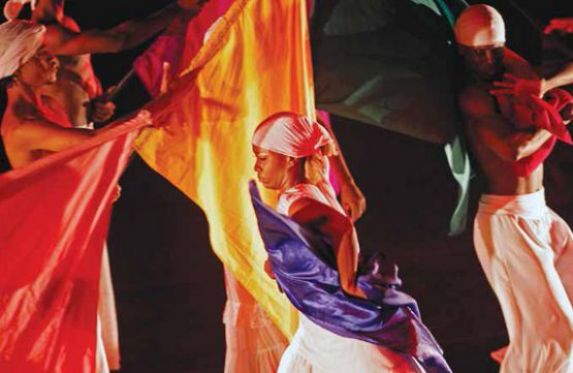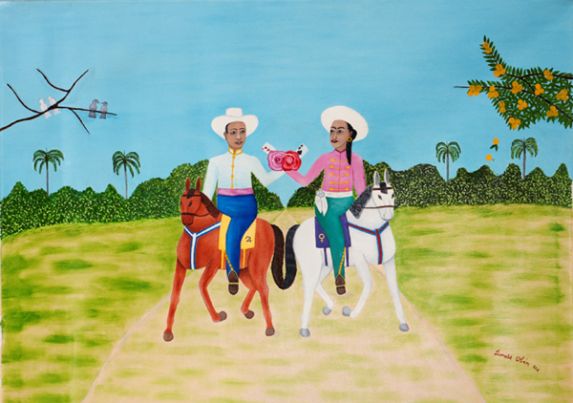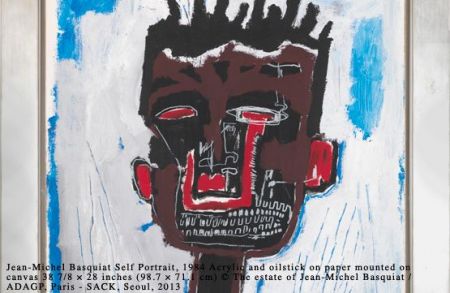
CULTURE (3)
Jeanguy Saintus is the recipient of the 2008 Prince Claus Award. The Prince Claus Fund for Culture and Development website www.prince- clausfund.org/en/network/jeanguy.html has the following to say about this visionary artist:
Jeanguy Saintus is the recipient of the 2008 Prince Claus Award. The Prince Claus Fund for Culture and Development website www.prince- clausfund.org/en/network/jeanguy.html has the following to say about this visionary artist:
Visionary choreographer, dancer and educator, Jeanguy Saintus expresses the rich fusion of Caribbean culture and the contemporary life of his country through the body. He studied anthropology, sociology and languages, taught himself Haitian, classical and modern dance and co-founded Cie Ayikodans, a group that has matured over 20 years,establishing a centre and training programme.
Synopsis of Art by Artists of Haitian Descent in the Diaspora –– Part II
By Marcel Duret and Fred Thomas
One of Haiti’s greatest exports to the world is its beautiful art. To illustrate the four major trends of the Haitian diaspora as outlined in the 2013 Summer Issue of the Tokyo Journal, Haitian art experts Marcel Duret and Fred Thomas cast a closer look on the works of a few selected artists.
THE NAIVE VEIN
When looking at a naive painting a most striking element is the raw quality and directness of the composition and design. Everything is kept simple. What you see is what it is about. Lines and colors are combined to convey a clear image where each element appears necessary for the edification and justification of the whole. As few ornaments as possible are used, making the bluntness of expression look even more evident. The lack of artifice and hid- den meanings maximizes the connection between the picture and observers, many of who lose no time trying to decipher some cryptic iconography or unclear symbols that require initiation rites or specific knowledge. This simplicity can baffle onlookers who try so hard to complicate things based on their own bias or collective pool of references, instead of opening up their minds and let- ting themselves become impregnated by the unique visual and emotional experience that a primitive painting can achieve when it is made by someone genuinely awestricken by an inner vision or a natural phenomenon.
This simplicity sometimes appears in the flatness of shapes. It is as if the artists use some type of magnifying glass that enables them to bring forth every element of a scene as though each one is of equal importance. This way nothing is left behind for the benefit of the observer who can see the relevance of every item as it is conceived in the artist’s mind.The idea is not to judge but rather to take everything indiscriminately at face value.
Originally appeared in Tokyo Journal Issue #273. Click here to order from Amazon
Synopsis of Art by Artists of Haitian Descent in the Diaspora –– Part I
By Marcel Duret and Fred Thomas
ON May 15, 2013, Jean-Michel Basquiat’s “Dustheads” sold for a record price of US$48.8 million at a Christie’s auction in New York. This made “Dustheads” one of the most expensive pieces of art on earth today. Basquiat’s impact can be seen globally. An example is an exhibition of his work from May 21 to August 10, 2013 at the Gagosian Gallery in Hong Kong. The exhibition attests to Basquiat’s acute global relevance 25 years after his untimely death. Basquiat is without a doubt the king of all artists of Haitian descent. But while he has gained international stardom, many other artists of Haitian descent living in the United States and Canada haven’t enjoyed the publicity that surrounded Basquiat’s life and death. Nevertheless, they are a group of extremely talented artists who have contributed to the vivacity of the art scene in North America.













